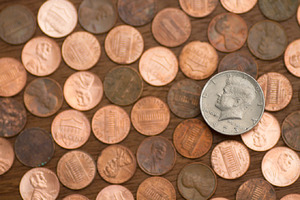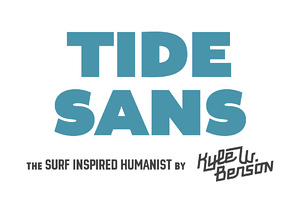One of the most critical aspects in almost everything we do in today’s corporate world is graphic design. When you build a website, it’s the design that would make page after page appealing enough for the visitors to decide to stay and see what else you have to offer. In marketing a brand, it’s also the design that creates the mood for the target audience and makes them realize how the products that a particular brand offers fit their personality perfectly. This is why it’s important to invest in graphic design. But the problem that graphic designers usually have is this: how much of an investment should a client put into my work?
Your Contribution
Before figuring out how much your rate should be, it’s important to realize just how important your work is. A lot of graphic designers have no idea how much to ask for because they fail to see the importance of their work. Knowing what value your product gives to your clients would also somehow help you quantify the value of the work you do.
Personal Identity
With every client you work with, you immediately become responsible for creating an identity for them. It’s not about you or who you are as a designer. It’s about what the client wants and what suits them the most. If you fail to give the client an identity that describes them perfectly, you also fail to give them the value that they paid for.
Brand Recognition
Your work is the main ingredient in allowing consumers to recognize a specific brand. You wouldn’t know it’s a Nike store unless you see that swoosh. You’ll recognize a McDonald’s from far away the moment you see those golden arches towering over one of their restaurants. You see anything red and white, and you automatically think of Coke. This is how huge design’s impact is on a brand. And this impact is what you create as a designer.
Your work as a designer is a form of communication. Through the design you build, your clients are able to communicate with their target audiences and relay their main message. Do they want to tell their customers that they’re a fun business to work with? Do they want to show that they mean business? Do they want a customer to feel safe with them? These messages can only be delivered to each customer if you come up with an effective design.
Let’s face it, any business that has an unappealing design would struggle to retrain their customers no matter how impressive their products or services are. It’s just hard to take a business seriously if they give you that impression that they don’t even know how to represent themselves effectively. This is what makes businesses lose clients, and of course, lose their chance of profit. Your work is something that would reel prospects in. It’s that neon sign that points any business out to customers and tells them that this is a better investment than the others.
These major contributions make you an integral part of your client’s setup. These are the things that you should remember in trying to come up with that perfect pricing scheme for the work that you do.
10 Important Questions to Ask Yourself
Before coming up with a final price, there are quite a few questions that you need to ask yourself first. These questions would allow you to come up with the most reasonable price possible for each service that you render.
- What services are covered with the project?
- What are my overhead expenses?
- How much money do I want to make in the end?
- What is everybody else charging?
- How badly do they need my services?
- Am I an expert in the nature of the project they’re asking me to do?
- How extensive is my experience?
- Will I charge hourly or will I charge a flat rate?
- How much is the client’s budget?
- What is my business strategy?
Once you have answered these questions, it would be a whole lot easier to figure out whether the price you are asking is reasonable and fair both to you and the client. Remember that you want to charge a reasonable rate while still staying competitive.
Tips in Coming Up with a Pricing Plan

Coming up with your rates is no easy feat. There will always be a number of factors to consider. If you focus on the right things however, it’s easier to get a clear perspective and figure out what the fairest price would be. Remember that in this line of work, there is always a risk of either charging too much, or charging too little.
Here are a few things that you should remember:
Make a profit
Don’t be afraid to give your client a price where you will actually make some profit. This advice is something that beginners should never forget. A lot of beginners think that it’s just about gaining experience for now. They give their clients such a low price because they feel that they do not have enough experience to demand for something that would actually give them a little extra.
Make sure the price you ask for does not just cover the costs. And definitely, you should never think about giving your clients a price where you lose out, either. Give them a price that would give you a reasonable profit to cover the effort, the sweat, and the mental energy that you drained as you worked on that project.
If you charge an hourly rate, make sure the client understands every aspect of the work
It always boils down to a question between charging a flat rate and charging an hourly rate. A lot of designers charge an hourly rate because this means that every minute that they are working is paid. However, clients are often wary of this system because they feel that they might be billed higher than necessary.
This is why it is extremely important to make sure that every client you work with has a clear picture painted in their mind the moment you tell them that you charge by the hour. Have a clear timeline of every step of the process. Show them the deadlines and potential problems that could cause a few delays. And whenever a problem comes up, be open to the client about it. This way, they know that every hour that they pay for really is worth it.
If you charge a flat rate, always set boundaries
A flat rate is always easier for clients to accept. However, you should also set a few boundaries when you charge a flat rate. You may be charging a low flat rate for a project so huge that you end up on the losing end. Make sure you define the services included with a specific project because the client might end up loading you up with a bunch of tasks, thinking that the rate they paid for includes everything on their mind.
Make your rates clear and specific. You could tell them that basic graphic design would cost them 0, but if they want you to handle the entire project, there would be an additional 0 for that. Have a list like this so that clients can easily choose the services they want and pay the flat rate for each service. You can even package a few services together and come up with a single rate for that to make it easier.
Know what you’re getting into
A lot of graphic artists actually charge extra should they encounter difficult clients. Remember that the more demanding a client is, the more tiring it would also be for you. It could literally drain all your creative juices, making work a little too hard for you. This could become a potential problem especially if you have another project lined up.
Before starting on any project, do some research first. Are these clients easy to get along with? How demanding are they? Look for other people they might have worked with in the past. This would allow you to have a clear picture of what you are getting yourself into the moment you sign that project agreement or contract.
Raise your rates when it’s time
You can’t stay at a single rate for the rest of your career. Especially when you work freelance, it’s always up to you to reward yourself with a raise every now and then. So how do you figure out when to give yourself a raise and start demanding more from your clients?
The moment you get swamped with work, this is the perfect time for you to raise your rates. Being offered project after project means that your services are in demand, something that you should take advantage of. It’s saying, “If you really want me to work on your project, you have to pay the price.”
Ask for a payment up front
Some ask for 50%, while some ask for 25%. This depends on your costs and if you have enough money to cover for them while the project is underway. This does not only ensure that you have a working fund to support the initial phases of the project, this also ensures that the clients stick around the moment the project starts. This has happened over and over again, with graphic designers working so hard on projects where the clients suddenly disappear. They end up losing a lot of time and money that was not even covered by the client.
You could also tell the clients that this deposit is non-refundable. This is an even better security measure for you, in case they suddenly decide to say that they’ve changed their mind and they want their money back.
Always start high at a negotiation
If it boils down to a critical negotiation, always start at a high amount. Think ahead and play different scenarios in your mind. Always think about the numbers that they would throw at you. “If I ask for this, how much would they want to take out of that amount?”
When you do your computation, you have to make sure that the point where you’ll be coming up with the compromise is the point where you want to be in the end. You can’t ask for 00 if that’s the rate that you really want. You start at 00, which they could lower down to 00. Who knows, you could even ask for 00 after that and end up with 0 more of what you initially set out to get.
Be flexible
Just because you already have a set price list does not mean that you cannot negotiate any longer. You also have to be flexible, otherwise, clients could turn away and get somebody else no matter how badly they want you to be on their team.
You could throw in an extra service in case they opted for a really high package and are asking for a discount, or you could convince them to get a few extra services with the promise of 10% discount.
Be competitive
What does everybody else charge for their services? Always base your price on this. No matter how great you think you are, your potential clients will always have a few other options up their sleeves. This means that the moment they decide that you’re just not worth it, it will be easy for them to invest that budget onto someone else.
If you do end up charging them a little higher than what everyone else is asking for, always be ready to justify this. You may have more experience over the competition, or the tools that you use may be more advanced than what they have. You may also be able to deliver the results they need within a smaller timeframe.
Don’t be afraid to lose clients
Some graphic designers end up saying yes to an unreasonable offer just because they want the client to stick with them. If you believe that it’s a budget that you cannot work with, don’t be afraid to say no. Remember that for you to be able to deliver top results, you also need the necessary resources to make it work.
If a client is trying to pull your price down to an unreasonable amount, just say no and walk away. If that’s how badly they need your services, then they would understand that they also have to pay the right price for it.
Sample Formulas for Pricing

Here are three basic formulas that you can adopt in case you are still confused about how to come up with a pricing package.
Expenses + Salary
Just figure out how much your total costs are. Look at what you are hoping to earn by the end of the year and divide it with the number of working hours. This should give you a total per hour rate that you can base your salary from.
(Rate Per Hour x Hours to Complete) x Complexity Level
This should give you a pretty good idea on how to price package rates. Create a table on the complexity levels and how much the difference would be as the project become more challenging.
Quote from Contractor x 1.10
This is a pricing usually used for outsourced work. Of course, the multiplier that you want to use would still depend on the resources, tools, and other things that you would need. The bigger the project, the bigger your multiplier could also be.
Know Thyself
Remember that when it comes to pricing, there is no exact formula that’s right for everyone. The price you ask for would still depend on the circumstances. Do you still have a few other clients lined up? Is this a project that you want to work on so badly? Would working on this project take up all of your time that you wouldn’t have time to work on other projects for quite a long period?
Make sure that you know who you are as a graphic designer and how great your work actually is. From here, always put that value into every price that you ask for. Remember that each cent that the client pays you defines how much you are worth as a professional. Make sure the price really represents you, and does not cheapen your work, nor does it exaggerate what you can really accomplish as an artist.
Products Seen In This Post:

How Much Should I Charge for Graphic Design Work?


No comments:
Post a Comment
Note: Only a member of this blog may post a comment.